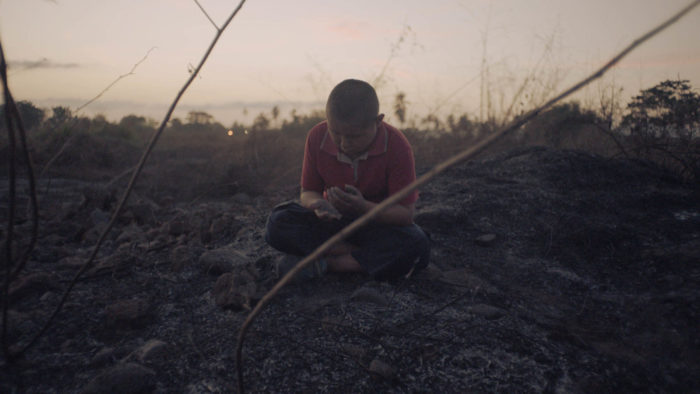Through retelling the life of a young Mexican immigrant serving life in prison for murder, Rodrigo Reyes’ striking docu-drama ‘Sansón and Me’ seeks to restore the humanity of young men of colour who are swallowed up by the United States criminal justice system. The director says: ‘I seek to explore the interstitial spaces of the immigrant experience. My films aim to shed light on the borders that divide and commit violence upon us, but also reveal pathways to reimagining our shared universe’.
‘Sansón and Me’ will be screening at Bertha DocHouse from Nov 18, 2022.
This documentary focuses on the case of Sansón Noe Andrade, an undocumented Mexican immigrant in rural California who is currently serving life without parole, having been convicted of murder at the age of 19. Director Reyes, who has previously served as a Spanish interpreter in the criminal justice system, worked on Sansón’s trial and was left shocked at the way in which the system simply erased the young man’s life, with no consideration of his individual agency, past, or future.
Born in Tecomán, Mexico, Sansón immigrated to California as a young boy. There he worked many jobs in industries such as farming, cooking, and construction. He is an avid reader and a devoted student, currently working on his GED (certification of United States or Canadian high school-level academic skills). Over the course of this project, he wrote hundreds of letters detailing his life story and documenting his experiences in the California prison system.
In an endeavour to discover more about Sansón, the director began an epistolary relationship with him, subsequently visiting him in prison and resolving to tell his story through film. While Sansón himself was forbidden to appear in the film, Reyes reached out to members of his family in Mexico. In the scenes of Sansón’s childhood, Sansón is portrayed by his nephew, while his sister and uncle play his parents. This adds considerable realism and humanity to the story being told: while not professional actors, the viewer is constantly aware that these characters really existed, bringing Sansón’s world to life on-screen.
The choices made in casting and dramatisation serve to restore the humanity and personal history of an individual who has been erased by the system.
The adult Sansón is played by Gerardo Reyes, an inexperienced actor from the state of Michoacán, who is extraordinarily convincing in the role of a young man swallowed up by forces outside of his control. Reyes reads Sansón’s letters from jail, and appears in various scenes with director Reyes in which they re-enact their interactions from the trial and in-person meetings.
The choices made in casting and dramatisation serve to restore the humanity and personal history of an individual who has been erased by the system. They also shed light on the social conditions of poverty that exist in many parts of Mexico, a country where over 2 million live in extreme poverty and 30 per cent of the population has no access to clean drinking water. Sansón comes from a context of violence, both familial – at the hands of his alcoholic father and abusive grandmother – and social, in an area plagued by drug cartels. Inequality and violence do not come to an end when Sansón crosses the border, however. He once again finds himself in a world of poverty and gang violence, where he feels like he belongs ‘neither here nor there’.

At one point in the film, Sansón claims that jail is the ‘best home’ he’s ever had. He points to the desperate inequality and violence from which he sought to escape by migrating to the United States, and the similar conditions he confronted upon arriving. Socioeconomic forces are often overlooked by criminal justice systems across the globe but particularly in the US, where crimes are systemically regarded as isolated incursions of the law, rather than as the direct result of these conditions. It is telling that 30 per cent of prisoners in the US are Hispanic, despite this group representing only 19 per cent of the total population.
When individuals have their futures erased as punishment for their crimes and the systemic conditions that these crimes emerge from are overlooked, we are made to question hegemonic definitions of justice.
While the film offers little in the way of hope for Sansón’s case, it resoundingly achieves its goal of restoring the humanity of an individual whose very identity has been systemically wiped out. It also provokes us to question the broader socioeconomic and systemic forces that produce such individuals, and to ask whether a new form of justice is possible.
‘Sansón and Me’ will be screening at Bertha DocHouse from Nov 18, 2022.


